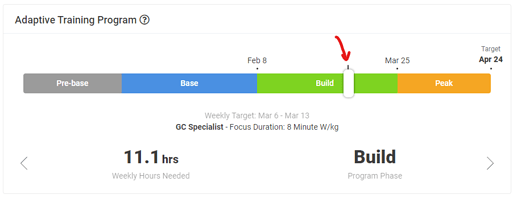Sorry if this has been addressed. I’m new and have some questions about the Xert training planner. My questions may derive from the way Xert is designed, but it could also be that I am just confused by the interface. Bear with me and please feel free to correct any bad assumption I may have made.
Specifically, I am confused by the fact that the Improvement Rate seems to be based on time rather than XSS. If you turn up the ramp rate, then the projected hours at goal date increase dramatically. But I find this counter-intuitive because as I move from base phase to build phase I typically reduce volume to account for an increase in intensity. This helps me achieves race specificity as I approach my goal event. In other words, my TSS is constantly increasing throughout the season (progressive overload), but my volume is typically decreasing (at least to some extent) once base phase is complete. This is a common physiological approach to training that is scientifically tested and the reason why athletes use metrics like TSS and XSS rather than time to plan a season.
So here is the issue: Xert is telling me that I am projected to ride 24 hours per week at goal date. I know from past experience this shouldn’t be necessary - especially for the projected gains. In fact, I think my hours should be slightly less in the future than they are right now because I am currently late in the base phase where volume is highest.
I tried using the Automatic Assign button on the planner to suggest rides for two weeks out to get a feel for how Xert will progressively overload my schedule. Both weeks were identical. This is not good. Next week should either have more volume or more intensity than this week or I won’t improve.
I’ve read several posts that basically suggest that I should be more “dynamic” and just trust the system to give me the correct workout from day to day. That won’t work. I race bikes. I can’t afford to transition to a build phase only to find that the system is suggesting the wrong workouts in order to unnecessarily increase my time in the saddle for some arbitrary time goal.
Please let me know if I am looking at this wrong. I’m concerned that the planning function will get me where I am trying to go.
